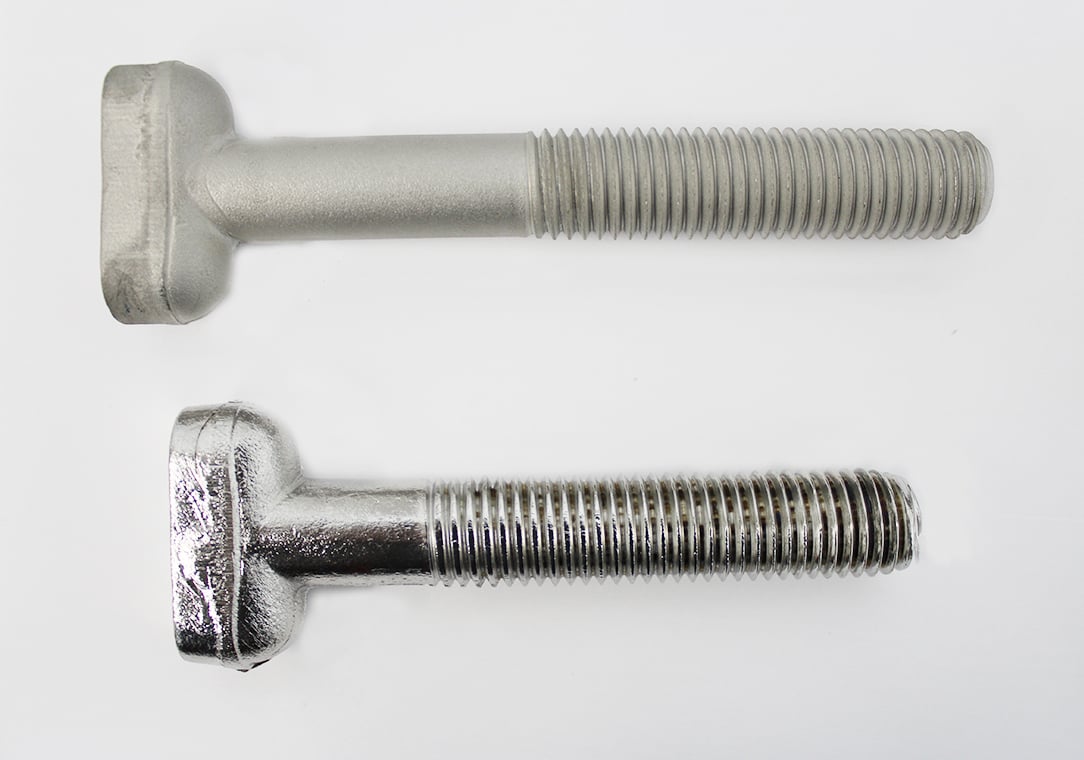
Electropolishing and Passivation
A lot can go into choosing a finish for your stainless steel fasteners. The two finishing operations most industries specify for their parts are electropolishing and passivation. Today, we’ll look at these two chemical processes, learn their differences, and discuss the advantages one may have over another.
Electropolishing
Electropolishing is a chemical process that can be performed on almost all metal to remove imperfections and contaminants on the surface of the metal. The process involves submerging the fastener or other metal product in a temperature-controlled chemical bath. A current is then passed through the bath, oxidizing the surface and causing it to shed and deburr the contaminants and smooth out any flaws. The fastener comes out to a very bright finish. Not only is the steel visibly shinier, but electropolishing has greater corrosion resistance than that of passivation.
Passivation
Like electropolishing, passivation is also a chemical process designed to remove imperfections from steel and provide a clean finish. In contrast to electropolishing, passivation does not produce a bright or shiny finish. Passivation is designed to improve corrosion resistance on stainless steel. Passivation is effective on most grades of stainless steel, but it is not recommended for certain types of alloys. One difference between electropolishing and passivation is the pre-cleaning step in passivation. Sometimes, a pre-cleaning operation is required prior to passivation, because the process alone is not completely effective. After pre-cleaning, the process of passivation involves placing the steel parts into a nitric or citric acid bath at a set temperature and time depending on the type of alloy. The free iron and other materials on the surface of the steel is then removed in the bath. The finished product has a dull, silver colored finish. On average, passivation is a third less expensive than electropolishing, making it a cost-effective option that produces good corrosion resistance.
Bottom Line
While both methods of finishing provides increased corrosion resistance, electropolishing produces a brighter finish with better corrosion resistance than passivation. That said, passivation provides a clean finish with corrosion resistance at a third of the cost.
***
Call or contact us for a quote today to learn how Birmingham Fastener can provide you with quality fasteners with a quick turnaround!